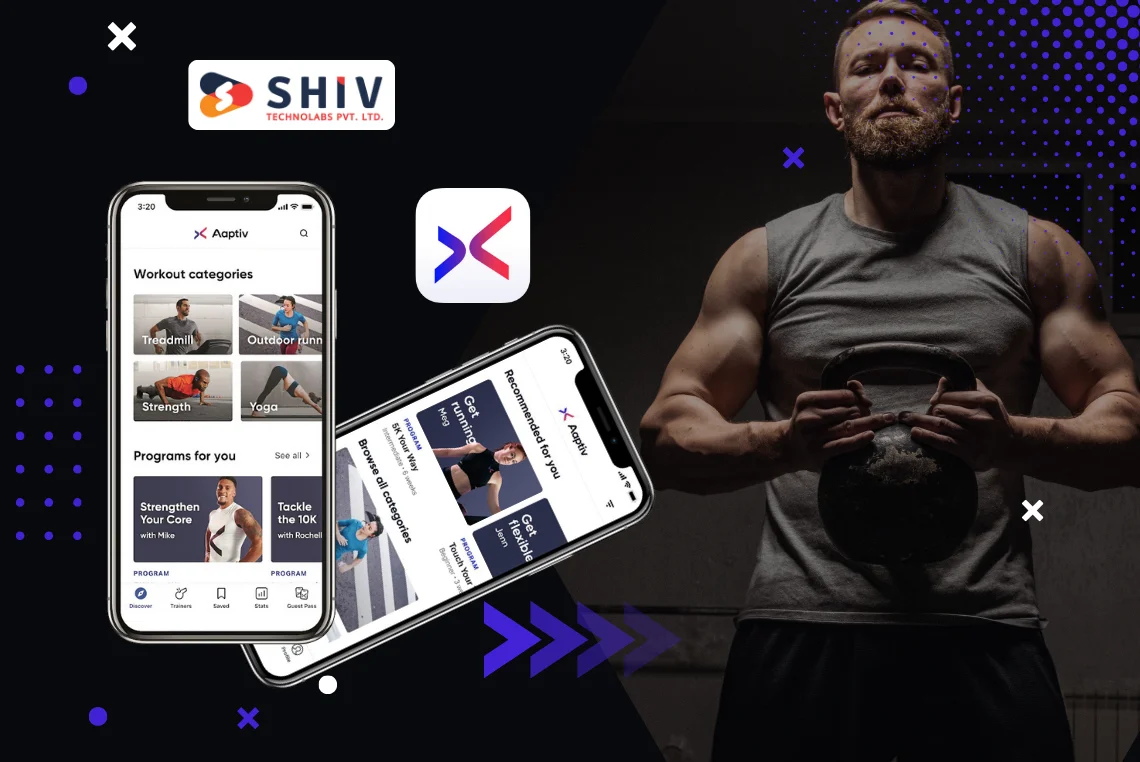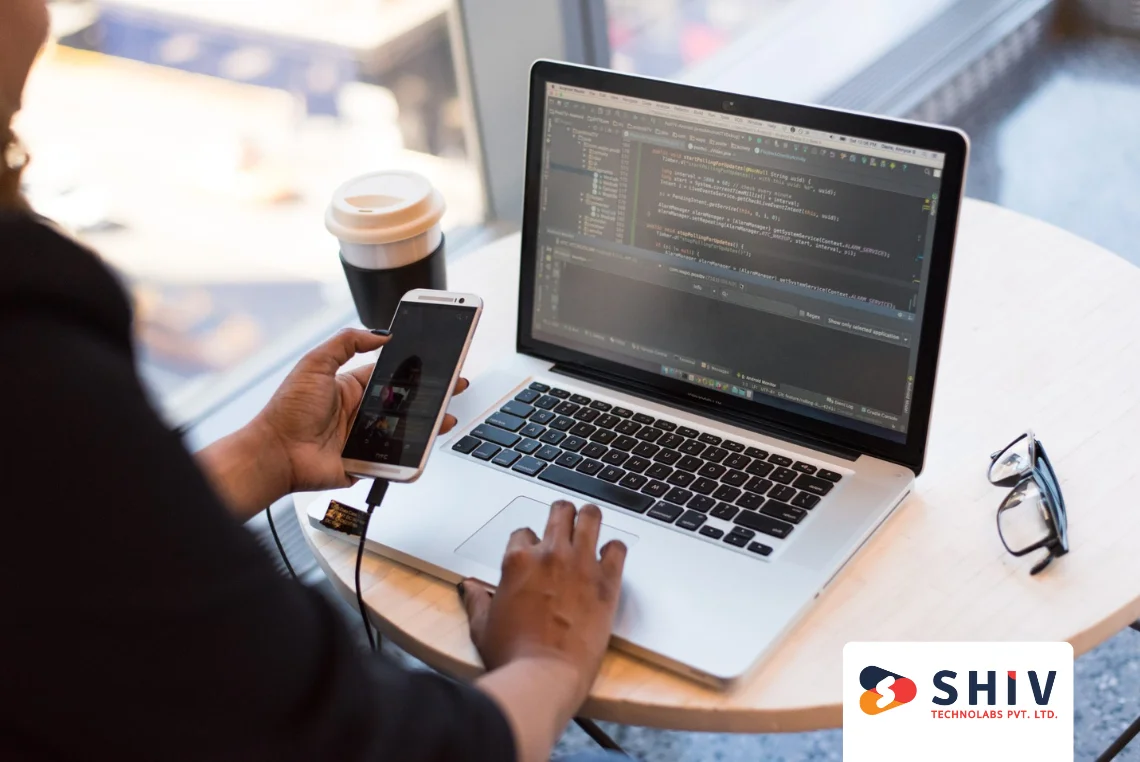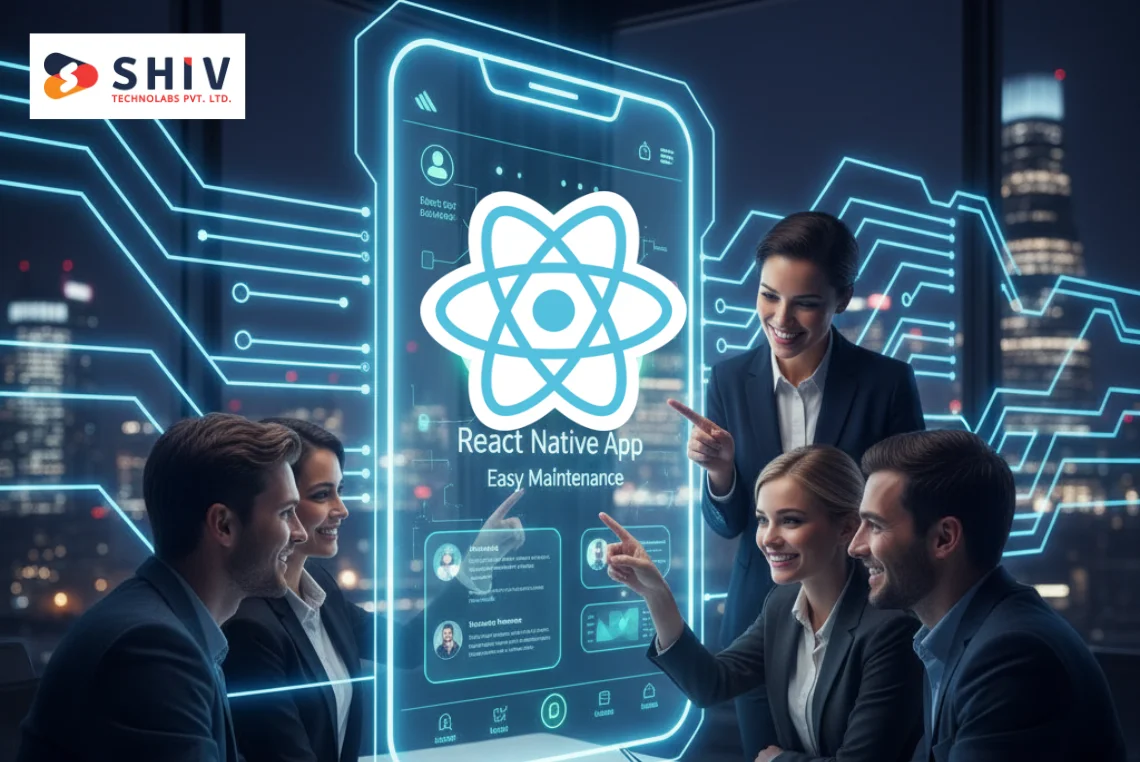Table of Contents
Fitness habits have shifted dramatically in recent years. People now look for convenience, structure, and personalization in one place. That’s where health and fitness apps step in. Aaptiv, for example, delivers audio-guided workouts, personalized fitness paths, and expert support—all in one app. If you want to build a fitness app like Aaptiv, it’s essential to first understand what goes into its design, features, and cost.
This post breaks down the real fitness app development cost, feature set, tech stack, and what it takes to create a fitness app that stands out. Whether you’re building from scratch or working on an Aaptiv clone app development, this guide covers the essentials.
Growing Demand for Fitness Apps in 2025
The global demand for fitness apps continue to grow in 2025. With remote work, on-demand wellness content, and the rising popularity of self-paced training, users increasingly rely on mobile apps to maintain their fitness routines.
The global fitness app market is on a strong upward trend. According to the Business Research Company, the market was valued at $14.66 billion in 2024 and is projected to reach $17.81 billion by the end of 2025. With a compound annual growth rate (CAGR) of 26.7%, the market is expected to hit $45.9 billion by 2029.
This rapid growth reflects the rising global demand for accessible, mobile-first health and fitness solutions. As more users turn to apps for guided workouts, progress tracking, and wellness coaching, businesses looking to build a fitness app have a strong opportunity ahead.
Whether you’re planning a simple tracker or a feature-rich solution like Aaptiv, these numbers clearly show that the fitness app space will continue to expand in the coming years. More users are seeking digital solutions to support healthier lifestyles, and they are willing to pay for value-driven experiences.
Core Features to Build a Health and Fitness App
If you’re planning to build a fitness app like Aaptiv, you need more than just a workout player. A successful health and fitness app includes a combination of essential tools, user-friendly design, and real-time tracking. These features shape the experience, keep users engaged, and create long-term value. Let’s go through the core components:
1. User Registration and Profile Setup
Every app starts with onboarding. Let users sign up with email, phone, or social logins. Allow them to set fitness goals, input preferences (e.g., workout type, intensity), and update personal metrics like age, weight, or gender.
Why it matters: Personalization begins here. It helps tailor the workout plan and track progress effectively.
2. Audio or Video Workout Streaming
Aaptiv built its name around audio workouts led by expert trainers. Your app can also include videos or a hybrid model. Let users filter workouts based on duration, intensity, or type (HIIT, yoga, running, etc.).
Features to include:
- Streaming or offline access
- Workout search and filter options
- Favorites and history
3. Workout Scheduling and Reminders
Let users schedule their sessions with a built-in calendar. Include smart reminders to increase consistency and app stickiness. Example features like daily or weekly plans, push notifications, and goal-based scheduling.
4. Progress Tracking and Performance Stats
Allow users to view past performance and ongoing progress. This builds motivation and encourages habit-building. Metrics to track:
- Total workout time
- Calories burned
- Personal records
- Milestone achievements
5. Subscription Plans and Payment Gateway
Offer free trials or limited access. Provide multiple subscription tiers and secure payment integration through services like Stripe, Razorpay, or Apple Pay.
Features:
- Monthly, quarterly, or annual plans
- Automatic renewal setup
- Easy cancel or upgrade options
6. Trainer or Coach Dashboard (If Offering Trainer Access)
If your app includes professional guidance, add a separate dashboard for trainers. They can upload workouts, view user stats, and respond to feedback. Ideal for fitness businesses, personal coaching apps, and corporate wellness platforms.
7. Integration with Wearables and Health Data Sources
Support popular devices like Apple Watch, Fitbit, Garmin, and Google Fit. Sync steps, calories, heart rate, and more. Benefits:
- Adds value for serious fitness users
- Encourages daily tracking
- Supports custom recommendations
Also Read: Best IoT-Enabled Wearable Devices For Health Monitoring in 2025
8. Offline Mode and Content Download
Let users download workouts when traveling or in low-network areas. Audio-based sessions work especially well offline and require less storage. Include auto-download for favorites or scheduled workouts.
These features form the backbone of a strong health app development strategy. You don’t need to launch everything at once—start with an MVP and build over time. However, the more valuable and easy-to-use your features are, the more likely users will stick around and pay for premium access.
How to Build a Fitness App Like Aaptiv: Step-by-Step Breakdown
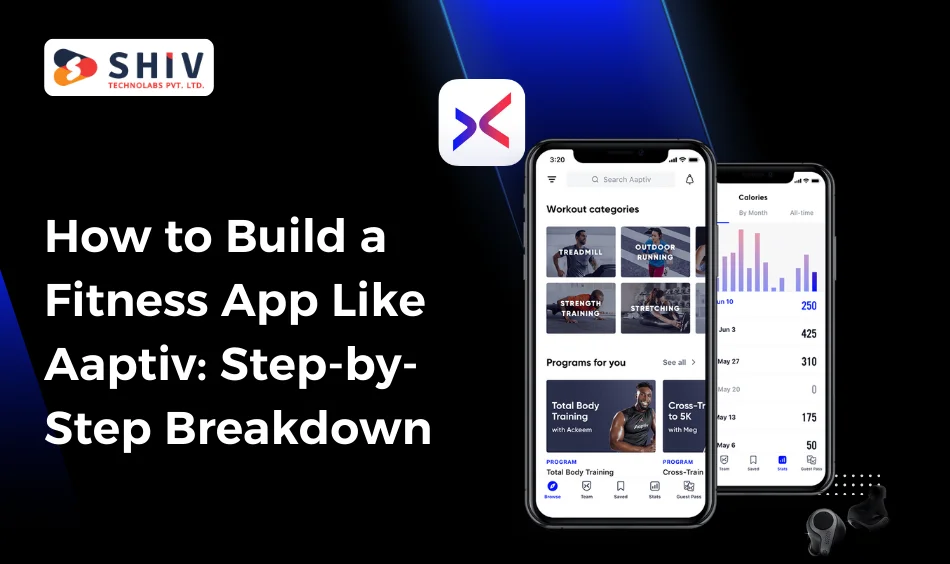
Creating a successful health and fitness app requires a clear plan, the right features, and a capable development team. If you’re planning to build a fitness app like Aaptiv, here’s a practical roadmap to follow.
Step 1: Define the Core Purpose of Your App
Before writing a single line of code, answer a few questions:
- Who is this app for? (e.g., beginners, gym lovers, runners)
- What fitness format will you focus on? (e.g., audio workouts, video tutorials, live sessions)
- Will you offer general workouts, or target niches like yoga, HIIT, or prenatal fitness?
Clear answers to these will guide every part of your fitness app development process.
Step 2: Understand Your Audience
Aaptiv succeeded by understanding that not all users want to watch screens while working out. Their audio-guided experience made workouts easy to follow and hands-free. You need similar insights:
- Age group and lifestyle of users
- Preferred workout formats
- Device usage (phones, tablets, smartwatches)
- Fitness goals (weight loss, strength training, endurance, etc.)
User research helps you make a fitness app that fits real needs, not assumptions.
Step 3: Decide on Your Core Features
Include the above-given features to make your fitness app stand out in the competitive market.
Step 4: Choose the Right Tech Stack
Your app’s performance and future flexibility depend on the tech behind it. Here’s a proven stack:
| Layer | Technology |
| Frontend (UI) | React Native or Flutter |
| Backend (Server) | Node.js or Django |
| Database | PostgreSQL (structured) / MongoDB (flexible) |
| Media Storage | AWS S3 or Cloudinary |
| Notifications | Firebase |
| Payment Gateway | Stripe or Razorpay |
| Analytics | Google Analytics or Firebase |
This stack supports fitness app development for both Android and iOS with strong performance and security.
Step 5: Design the UI/UX
Keep the design clean, mobile-first, and goal-focused. Use calming colors, clear icons, and intuitive navigation.
Step 6: Hire a Skilled Team
Work with developers who have real experience in health app development. They can help you make a fitness app that’s stable, scalable, and user-friendly.
Step 7: Test Before Launch
Run multiple rounds of testing on real devices and with real users. Fix bugs, improve performance, and polish the interface.
Step 8: Launch and Track
Release your app and use tools like Firebase or Google Analytics to track user behavior, retention, and app performance.
By following these steps, you can build your fitness app that delivers real value. Whether you’re planning a basic MVP or aiming for full Aaptiv clone app development, a clear roadmap makes your app more focused and user-ready.
Also Read: Fitness App Development: Building a Strava-Like Tracker App
How Much Does It Cost to Build a Health and Fitness App?
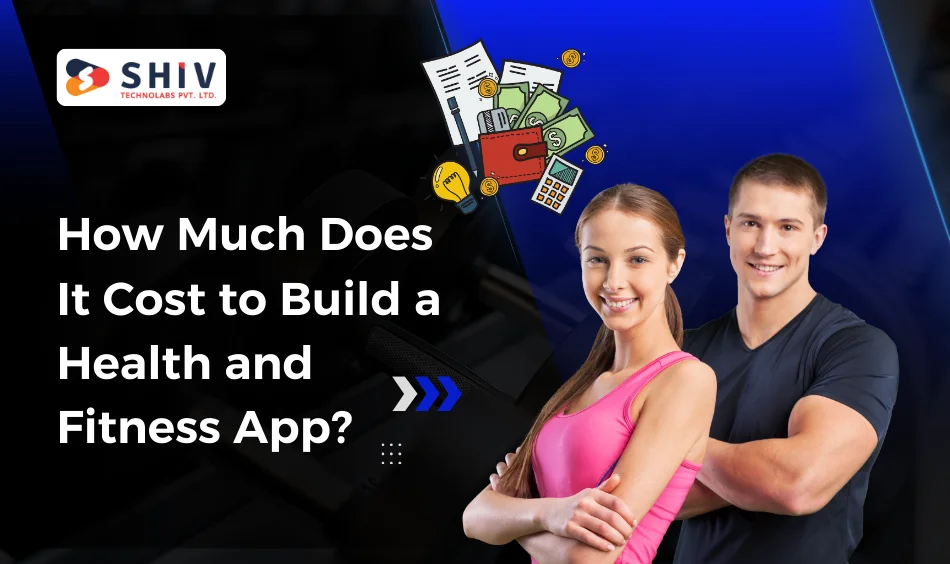
If you’re wondering how much it costs to build a fitness app, the answer depends on your feature set, target platforms, and app complexity. Whether you’re planning to build an MVP or a full-featured Aaptiv-like experience, the price can vary significantly.
To help you decide, here’s a breakdown of fitness app development costs based on three levels: Basic, Moderate, and Advanced.
# Cost Breakdown by App Complexity
| App Type | Development Cost (USD) | Development Time | What’s Included |
| Basic App | $25,000 – $35,000 | 2–3 months | User login, simple workouts, scheduling, and basic progress tracking |
| Moderate App | $40,000 – $60,000 | 3–4.5 months | Audio/video workouts, subscriptions, analytics, wearable support |
| Advanced App | $70,000 – $100,000+ | 5–7 months | Include offline mode, admin panel, and advanced AI |
# Fitness App Development Cost Distribution by Feature
Below is a detailed showing of how the total fitness mobile app cost estimate is distributed across core components:
| Feature | Estimated Cost Range (USD) |
| User Registration & Profile | $1,500 – $2,000 |
| Audio/Video Workout Player | $4,000 – $6,000 |
| Progress Tracking & Analytics | $2,500 – $4,000 |
| Workout Scheduler & Reminders | $1,500 – $2,500 |
| Payment Gateway Integration | $2,000 – $3,000 |
| Trainer Dashboard (Optional) | $2,000 – $3,500 |
| Admin Panel | $2,000 – $3,000 |
| Wearables Integration | $3,000 – $5,000 |
| Offline Access | $1,000 – $2,500 |
# Health and Fitness App Development Cost by Location: What You Should Know
The total cost to build a fitness app isn’t the same across the globe. One of the biggest cost factors is where your development team is based. Rates vary widely depending on region, developer experience, and project complexity.
| Region | Average Hourly Rate (USD) | Estimated Cost for Full App |
| United States / Canada | $100 – $150/hr | $100,000 – $150,000+ |
| Western Europe (UK, Germany, France) | $80 – $120/hr | $80,000 – $130,000 |
| Eastern Europe (Ukraine, Poland, Romania) | $40 – $70/hr | $50,000 – $80,000 |
| India / Southeast Asia | $25 – $50/hr | $25,000 – $60,000 |
If your goal is to build a fitness app for iOS and Android with high quality and reasonable cost, hiring from India or Eastern Europe is a smart choice. These regions offer experienced teams for health app development at a lower cost, without cutting corners.
Startups and mid-size businesses often go with offshore or hybrid teams (a local project manager + offshore developers) to get the best of both worlds.
Why Work With Shiv Technolabs to Build a Fitness App?
Building a strong app takes planning, execution, and technical skill. At Shiv Technolabs, we bring deep experience in fitness app development and healthcare solutions development, from MVPs to full-scale platforms.
We help startups and enterprises:
- Build a fitness app for iOS and Android with quality code and clear timelines
- Make a fitness app with unique features such as trainer dashboards and personalized workouts.
- Create a fitness app that fits your business goals and budget.
- Offer long-term support for updates, changes, and feature expansions
Whether you want a lightweight MVP or a complete Aaptiv clone app development, our team can guide you from idea to launch.
Final Thoughts
Planning to build a fitness app takes time, clear goals, and the right development partner like Shiv Technolabs. Aaptiv’s success shows that there’s a strong demand for structured, audio-based, and on-the-go workouts. You can enter this market with a smart feature set, thoughtful design, and solid functionality.
The total cost to build a fitness app depends on features, platforms, and ongoing support. But with careful planning, you can control the budget while building something people want to use.
Whether you’re just starting or ready to hire an app development team, Shiv Technolabs is here to support your journey in fitness app development. 📩 Contact us today to discuss your app goals and get a personalized quote. We’re here to help you take the next step toward building your fitness platform.

